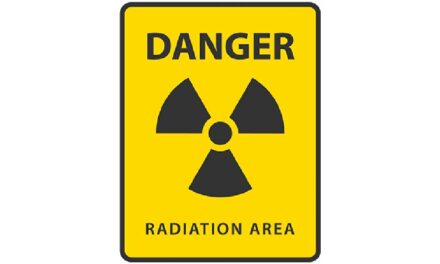Formaldehyde 101
Formaldehyde is a colorless gas with a pungent, suffocating odor. It is often used in an aqueous solution (formalin). The primary uses for formaldehyde include:
- The production of urea-formaldehyde and phenol-formaldehyde resins;
- Plastics;
- The manufacture of rubber, photographic film, leather, cosmetics, embalming fluids, disinfectants, and fumigants;
- Formaldehyde resins are used as adhesives in the manufacture of particleboard, fiberboard, and plywood as well as for molding, paper treating and coating, textile treating, surface coating, and in insulation foams;
- It is commonly found in as many as 4,000 different building materials and for this reason is one of the most dangerous and common indoor air pollutants.
Sources of Formaldehyde in a Home or Office
Sources of formaldehyde in the indoor environment include building materials, smoking, household products, and the use of un-vented, fuel-burning appliances, like gas stoves or kerosene space heaters. Formaldehyde, by itself or in combination with other chemicals, serves a number of purposes in manufactured products. For example, it is used to add permanent-press qualities to clothing, permanent press bedding and draperies, as a component of glues and adhesives, and as a preservative in some paints and coating products.
The most significant sources of formaldehyde in indoor products are likely to be pressed wood products made using adhesives that contain urea-formaldehyde (UF) resins. Pressed wood products made for indoor use include: particleboard (used as sub-flooring and shelving and in cabinetry and furniture); hardwood plywood paneling (used for decorative wall covering and in cabinets and furniture); and medium density fiberboard (used for drawer fronts, cabinets, and furniture tops). Medium density fiberboard contains a higher resin-to-wood ratio than any other UF pressed wood product and is generally recognized as being the highest formaldehyde-emitting pressed wood product.
Other pressed wood products, such as softwood plywood and flake or oriented strand board, are produced for exterior construction use and contain the dark or red/black-colored phenol-formaldehyde (PF) resin. Although formaldehyde is present in both types of resins, pressed woods that contain PF resin generally emit formaldehyde at considerably lower rates than those containing UF resin.
Symptoms of Formaldehyde Exposure
Formaldehyde is predominantly an irritant of the eyes and respiratory tract; it causes both primary and sensitization dermatitis. Eye symptoms include burning, itching and blurred vision. Irritation of the mucous membranes has been observed even at very minute concentrations of exposure. Most commonly reported symptoms include tingling sensation in the eyes, nose and throat, particularly in the posterior pharynx and wheezing.
In higher concentration exposures of, lets say, 10 ppm, exposure can only be tolerated for a very few minutes before it becomes hard to breathe, the nasal cavity and throat burn severely, and symptoms extend to the trachea producing an unrelenting dry cough. Generally symptoms subside within one to two hours when individual is removed from offending areas. However, in acute irritation of the respiratory tract from inhalation of very high levels of formaldehyde greater than 50 ppm and in confined spaces, pulmonary edema and pneumonitis occurs; at concentrations of 100 ppm, exposure is fatal.
Formaldehyde – Serious and Deadly Results
In 1987, the U.S. Environmental Protection Agency (EPA) classified formaldehyde as a probable human carcinogen under conditions of unusually high or prolonged exposure. Since that time, some studies of humans have suggested that formaldehyde exposure is associated with certain types of cancer. The International Agency for Research on Cancer (IARC) classifies formaldehyde as a human carcinogen.
Formaldehyde undergoes rapid chemical changes immediately after . Some laboratory studies suggest that formaldehyde affects the lymphatic and hematopoietic systems. Based on both the epidemiologic data from cohort and case-control studies and the data from laboratory research, NCI investigators have concluded that exposure to formaldehyde may cause leukemia, particularly myeloid leukemia, in humans.
Cleaning the Air, naturally
Plants are often overlooked helpers in ridding the air of pollutants and toxins – counteracting chemical out-gassing and contributing to a balanced internal humidity.
It is suggested that one plant be allowed for approximately 10 square yards of floor space, assuming average ceiling heights of 8 to 9 feet. With this size in mind, you need two or three plants to contribute to good in the average domestic living room; approximately 20 to 25 square yards.
Assuming your room is 10ft. x 10ft. = 100 sq. ft divided by 9 (sq. ft. to a yard) = 11 sq. yards. You would need one or two air-filtering plants; two is advised at opposite ends of the room.
TOP 10 plants most effective in removing:
Formaldehyde, Benzene, and Carbon Monoxide from the air – especially important in new construction or remodeled buildings with new flooring, paint, furniture, etc.
- Bamboo Palm – Chamaedorea Seifritzii
- Chinese Evergreen – Aglaonema Modestum
- English Ivy – Hedera Helix
- Gerbera Daisy – Gerbera Jamesonii
- Janet Craig – Dracaena
- Marginata – Dracaena
- Mass cane/Corn Plant – Dracaena
- Mother-in-Law’s Tongue – Sansevieria
- Pot Mum – Chrysantheium morifolium
- Peace Lily – Spathiphyllum
- Warneckii – Dracaena
Research shows that the following 10 plants (listed with their common names) are the most effective all-around in counteracting off-gassed chemicals, contributing to a balanced internal humidity, and neutralizing odors and airborne contaminants:
- Areca palm
- Reed palm (known in China as the Good Luck Palm)
- Dwarf date palm
- Boston fern
- Janet Craig dracaena
- English ivy
- Australian sword fern
- Peace Lily
- Rubber plant
- Weeping fig (Ficus benjamina)
Although many plants like light, they do not all have to be placed near windows. Many originated in the dense shade of tropical forests and have a high rate of photosynthesis. These are ideal for the home and office and can be placed in darker corners.
IMPORTANT: When positioning plants, try to strike a balance between light and ventilation because plant effects on indoor air pollution appears to be reduced when set in a direct draft like from an open window or air conditioner/heating vent.
Avoid “External Chemicals” – They Cause Metabolic Damage
Our metabolism requires vast amounts of energy for everyday balanced functioning—even more for effective detoxification and reduction of overall body burden. Exposure to toxic chemicals equates to a slower metabolism as the body uses its energy reserves in its attempt to rid itself of chemicals—the rate in which it burns carbohydrates directly converts to weight gain, stored toxins and the inability to fully release them, contributing to chemically-induced immune system disorders.
The most profound effect of chemical toxicity is lowering our ability to generate body heat and reduce hormone levels that are essential for the release of stored body fat and the toxins contained within that also induce inflammatory disorders. In a fibromyalgia patient, for example, chemicals, as well as toxins created internally, get stored within the soft and connective tissues when effective detoxification of the large intestine and the lymphatic system is not achieved, or is hindered because of toxic exposure. Additionally, underlying inflammation caused by exposure inhibits the release, or complete release, of stored toxins, causing many “invisible illnesses.”
There are hundreds of chemicals in non-food products that we absorb from the environment by breathing or through skin absorption, including, but definitely not limited to:
- Paint
- Carpet
- Plastics
- Cosmetics
- Personal care products
- Laundry products
- Car exhaust
- Chemical fragrances
- Cleaning products
- Yard & garden products
- Solvents (synthetic fragrances, polystyrene cups/plates/meat trays, etc.)
- Heat-sealed coatings of metal foils such as on yogurt, sour cream and cottage cheese
- Toxic fumes from manufacturing
It’s become increasing important to learn about what we, our families and employees are exposed to on an ongoing basis; it’s the only way we can effectively take the best form of proactive measures to implement Health thru Education™, naturally.
Resources:
- Understanding Cancer Series: Cancer (http://www.cancer.gov/cancertopics/understandingcancer/cancer)
- What You Need To Know About™ Cancer (http://www.cancer.gov/cancertopics/wyntk/overview)
- What You Need To Know About™ Leukemia (http://www.cancer.gov/cancertopics/wyntk/leukemia)
- Leukemia Home Page (http://www.cancer.gov/cancertopics/types/leukemia)
- http://www.mdguidelines.com/toxic-effects-formaldehyde
- U.S. Environmental Protection Agency, Office of Air and Radiation. , 1989.
- International Agency for Research on Cancer (June 2004). . Retrieved May 4, 2009,
- Hauptmann M, Stewart PA, Lubin JH, et al. Mortality from lymphohematopoietic malignancies and brain cancer among embalmers exposed to formaldehyde. 2009; 101(24). Published online ahead of print November 20, 2009.











